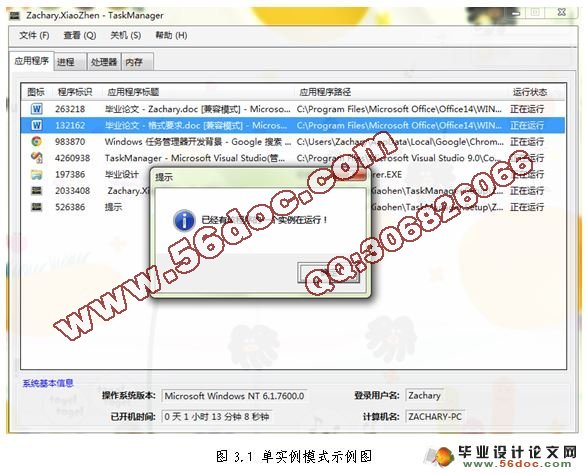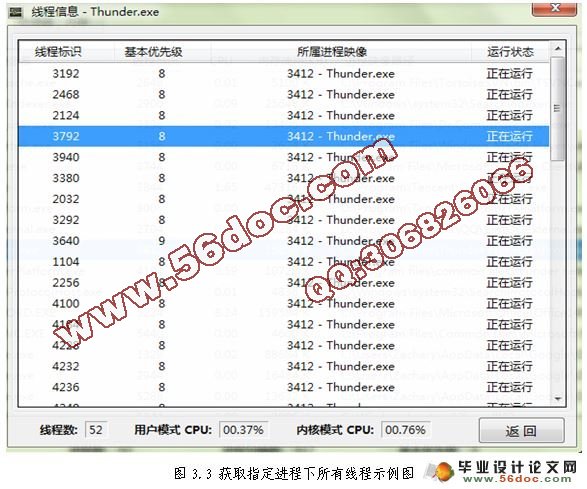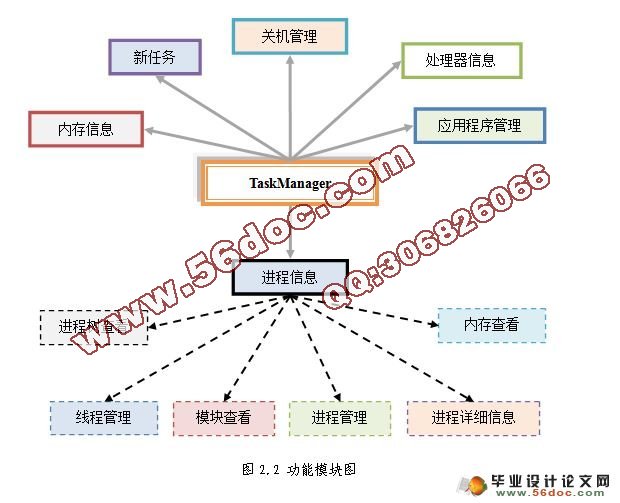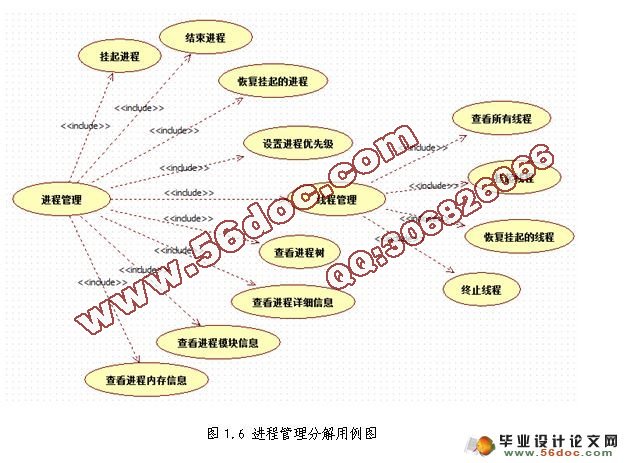Windows进程管理工具的设计与实现(C#)
无需注册登录,支付后按照提示操作即可获取该资料.
Windows进程管理工具的设计与实现(C#)(任务书,开题报告,中期检查报告,毕业论文说明书16000字,程序代码)
摘 要
Windows 操作系统自带的任务管理器在功能上存在缺陷,比如不能查看进程的模块以及进程的线程信息,并且 Windows 操作系统自带的任务管理器在进程的管理上是以进程作为粒度,而在实际的使用当中,尤其是在对一些程序进行调试的过程中,我们需要以线程作为粒度来管理进程,本次毕业设计即是在 Windows 操作系统自带的任务管理器的基础上,开发一个功能更完善的 Windows 进程管理软件。该进程管理软件以线程为粒度来对 Windows 操作系统中的所有进程进行管理,同时在相对于 Windows 操作系统所自带的任务管理器的基础上提供更多有关于进程的信息。本次论文则系统的介绍了该 Windows 进程管理软件的设计背景、设计过程以及设计成果。本论文主要内容包括:软件设计背景、软件的内容、软件设计结论以及设计心得。 Windows 进程管理软件采用 C# 完成,其运行在 .Net Framework 2.0 及以上平台。本论文可以作为使用 Windows 进程管理软件的使用说明书。
关键词:进程,线程,操作系统,Windows,C#,.Net Framework 2.0
ABSTRACT
The Task Manager in the windows operating system has some defects in function. For example, it can't use to look up blocks and information about thread process. What's more, the task manager in the windows operating system use the process as granularity. But in the actual use of them, especially in some of the process of debugging programs, it is necessary to use the thread process as granularity. My project is based on the task manager in the windows operating system to develop a new one which will function better. This process manager software use the thread process to manager all of the processes in the windows operating system. In the meantime, my software is designed to provide more information about process. This paper describes the background、the process and outcomes about the system management software of the windows process. The main contents includes: software design background, contents, software design conclusions and design experience. Windows process management software using C # to complete it. It runs on Net Framework 2.0 and above platforms. Thus, this paper can be used as manual of process management software.
Keywords: Process, Thread, Windows, C #, . Net Framework 2.0
课题主要任务:
完成32 位Windows 下进程的管理,即实现进程的挂起,执行,停止以及优先级的设置等操作,并且对于指定的进程,可以精确到针对该进程的线程进行管理,即终止线程,暂停线程,执行线程等操作,同时,可以列举出指定进程所引用的模块,以及该进程的私有地址空间,并且通过 GDI+ 绘制指定进程所使用的 CPU 使用率曲线。最后本课题还需完成对于 Windows 操作系统系统信息的一些显示,比如绘制 CPU 使用率曲线,内存使用率曲线,实现 Windows 的关机,重启,注销,锁定等功能。







目 录
摘 要 I
ABSTRACT II
第1章 概述 1
1.1 项目概述 1
1.2 需求分析 1
1.2.1 可行性分析 1
1.2.2 用例图 1
第2章 系统设计 6
2.1 项目架构图 6
2.2 功能模块设计 7
2.2.1 功能模块图 7
2.2.2 功能模块细分 7
2.3 窗口设计 9
2.3.1 窗口概述 10
2.4 运行环境 10
2.4.1 硬件环境 10
2.4.2 软件环境 10
第3章 系统实现 11
3.1 三层架构的实现 11
3.1.1 数据访问层 11
3.1.2 业务逻辑层 12
3.1.3 用户界面层 14
3.2 数据结构的定义 14
3.2.1 进程数据结构的定义 14
3.2.2 线程数据结构的定义 16
3.2.3 模块数据结构的定义 16
3.2.4 内存数据结构的定义 17
3.3 重难点实现 18
3.3.1 单实例模式 18
3.3.2 获取系统所有进程 20
3.3.3 获取进程的所有线程 23
3.3.4 获取进程的模块信息 25
3.3.5 获取进程的内存地址 27
3.3.6 获取进程所在进程树 29
3.3.7 绘制内存使用率记录图 33
3.3.8 绘制处理器使用率记录图 36
第4章 测试 38
4.1 黑盒测试 38
4.2 白盒测试 40
第5章 项目部署 42
5.1 运行环境的部署 42
5.2 项目的部署 42
结 论 43
参考文献 46
附 录 47
致 谢 49
